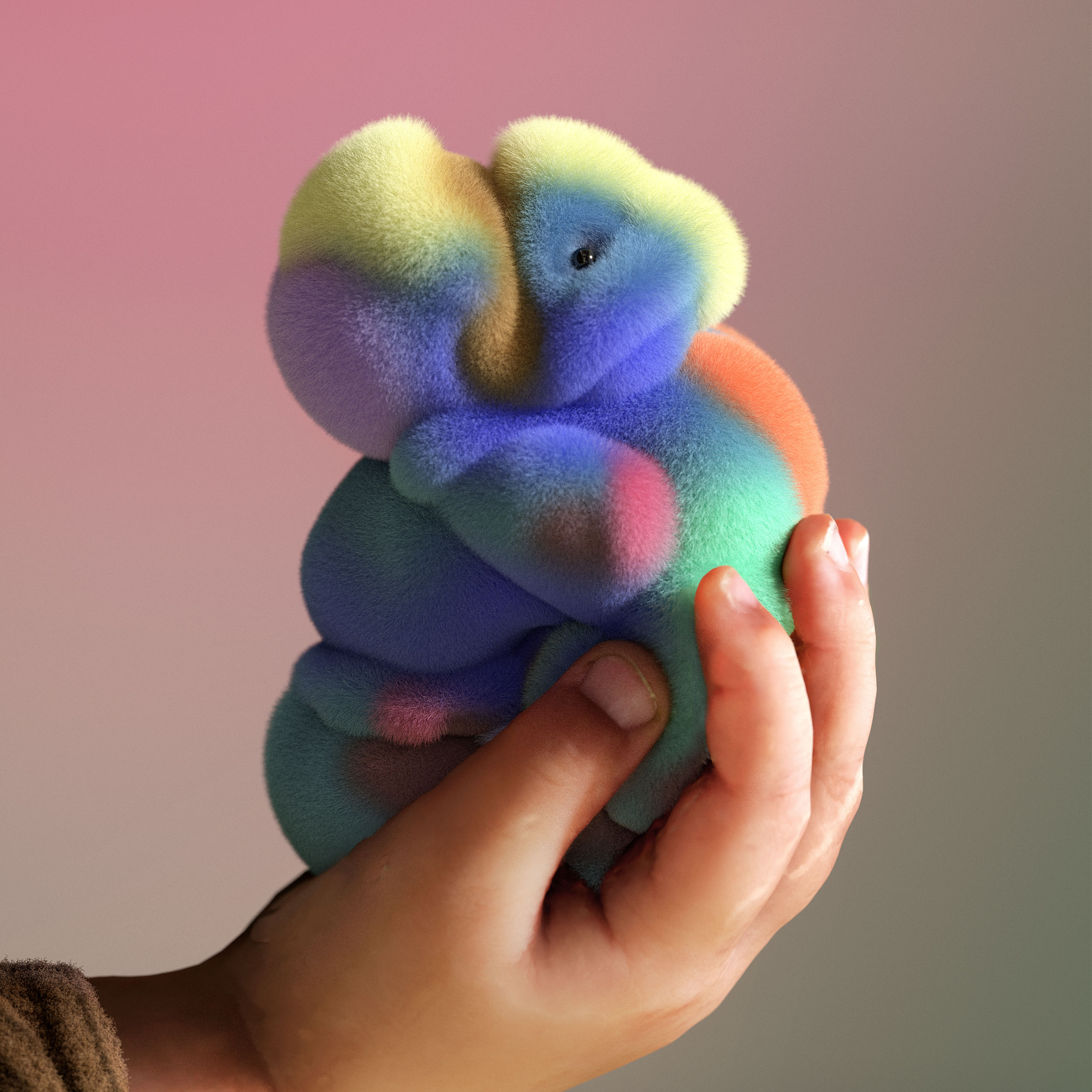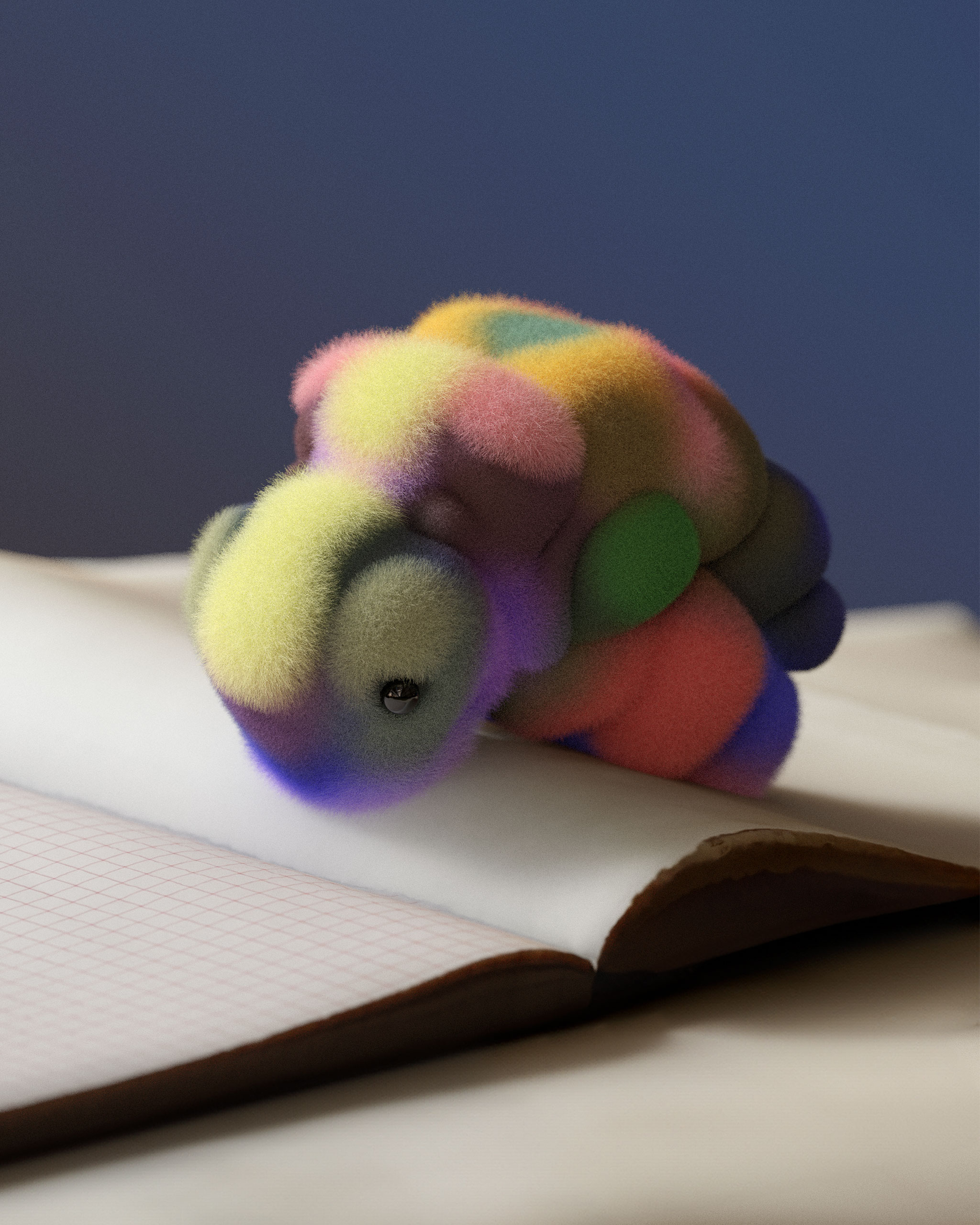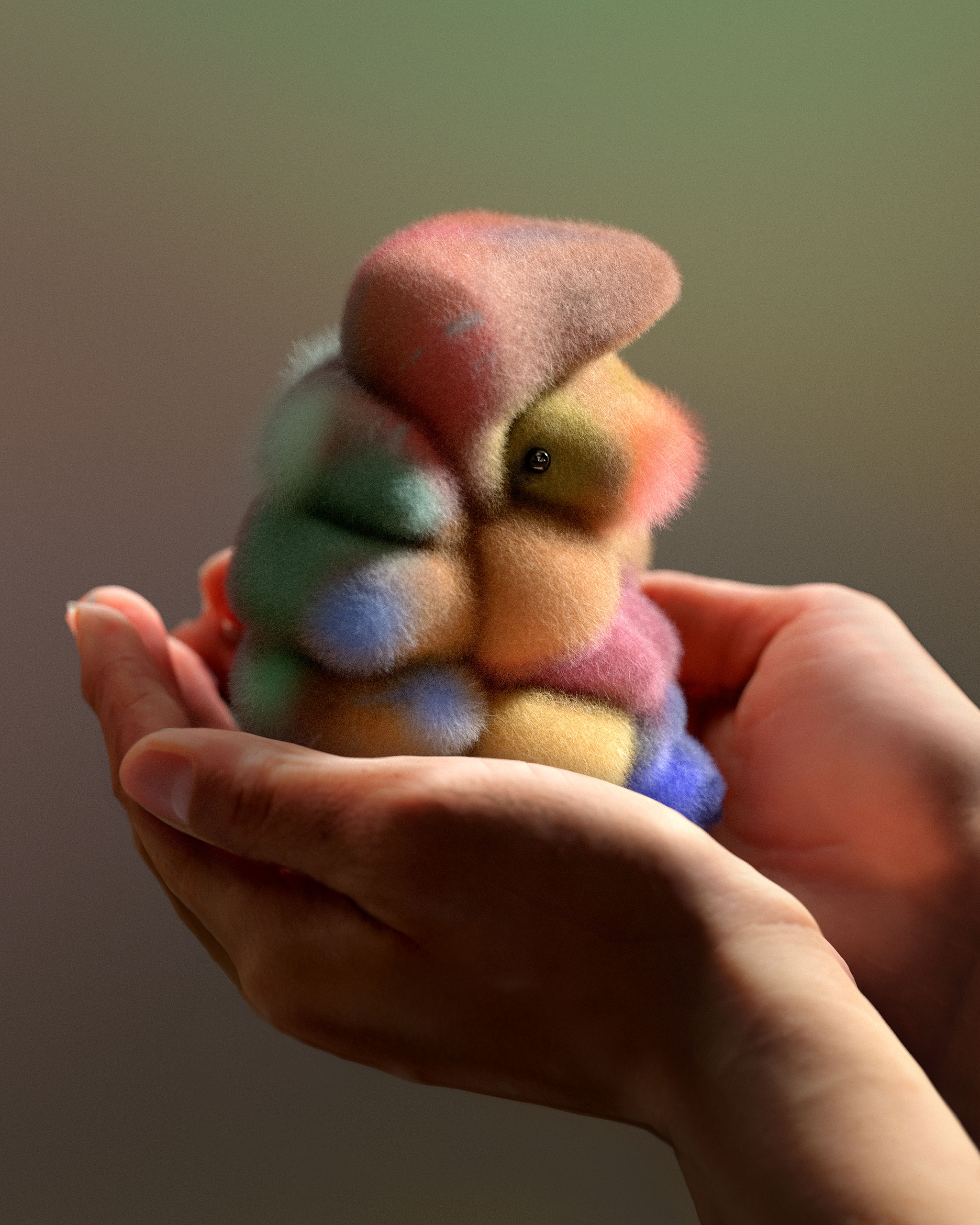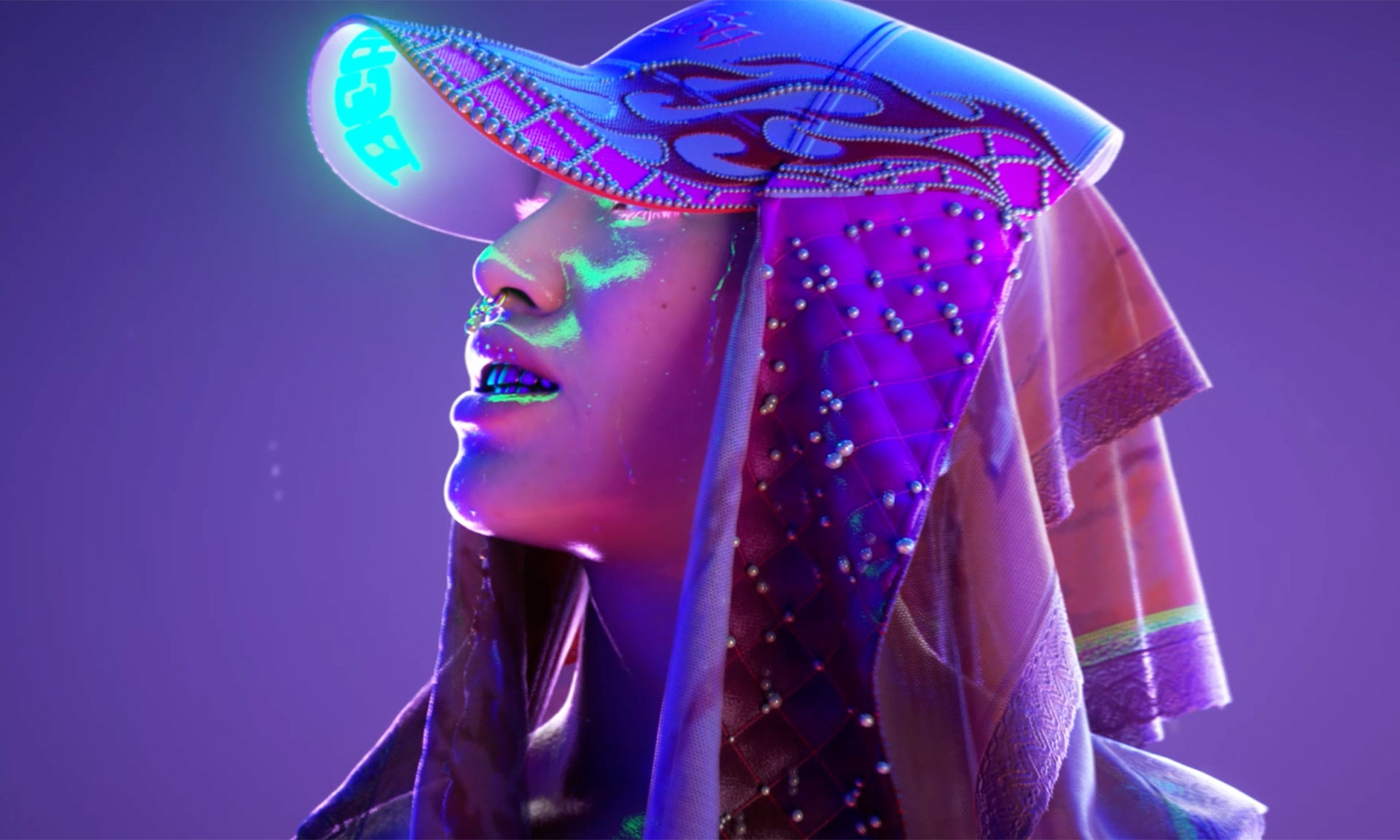Artificial intelligence has the potential to radically transform our educational system. Modem has collaborated with first-time parents and the art and design duo Wang & Söderström, to explore the vast promises and implications of AI-enhanced learning. My First AI imagines a future where children learn from intelligent, personalized tutors.

Learning and play – the two main pursuits of childhood – have both been historically entangled with technology. Education regularly evolves to incorporate new technological developments, especially those that improve how we share and process information, from the printed book to the calculator to the internet. Likewise, new technology has consistently been used for play: Industrial mass production caused toys to proliferate, while games emerged as an early application of the personal computer. In both domains, the fundamental nature of technology is on display, as it helps individuals explore and make sense of their world while transforming their ability to shape that world. Learning, at its best, resembles play, and computers enable an elegant synthesis of the two activities. Children’s access to computers has thus become increasingly synonymous with access to education, as demonstrated by ambitious initiatives like One Laptop Per Child, which developed a low-cost educational computer for worldwide distribution in 2005.
Whether for education, play, or anything else, children’s relationship with technology tells us much about our own. Our efforts to guide or restrict our kids’ device usage reflects and amplifies the feelings we have about how that technology affects us, both as individuals and as a society. With children, the stakes are higher; what we allow them to do indicates what we think is good for us, and what we try to shield them from indicates what we think is bad, or at least aren’t sure about. Regardless of what we tell ourselves – or what is marketed to us – children are the litmus test revealing what we actually think.
No contemporary technology represents the high stakes of digital technology (for children as well as adults) like artificial intelligence, which has gained mainstream attention through a recent crop of consumer-facing applications like ChatGPT. To its proponents as well as its detractors, AI represents enormous, transformative potential across many fields, ratcheting up the leverage that digital technology already provides. The hyperbolic media coverage of AI often deals in extremes, declaring that it will either bring about a post-work utopia or take over the world, depending on the author’s perspective, but the reality that has already arrived is generally more modest and even mundane. As Kyle Chayka writes, people are using AI “the way we use tools like photo filters or text-message stickers. It’s becoming part of the furniture of our digital lives.” As with so many other domains, AI’s impact on education could be similarly incremental and practical, assisting and supplementing the work that teachers currently do, or it could be dramatically transformative – and there’s a good chance it will be both, for different groups. But regardless, we must still make sure we know what we’re doing, as with any other technology that we give to children.
PERSONAL COMPUTING FOR EDUCATION AND PLAY
As digital technology has become more intuitive, it has become more playful. Thanks to the approachable nature of personal computing, children have become a user group for whom that technology is designed, with education as one of its most fruitful applications. The concept of a computer for kids is as old as the device itself, with computer scientist Alan Kay conceiving the Dynabook in 1972 as “a personal computer for children of all ages,” resembling a laptop or tablet but specifically meant for educational use. Likewise, Texas Instruments introduced the Speak & Spell series in the late 1970s, colorful handheld devices that blurred the distinction between toy and educational tool. In contrast to the image of a child passively watching movies on an iPad, provided by their parents to pacify them and keep them quiet, these devices reveal an alternate trajectory for the personal computer as a tool of playful, engaged learning.
Mitchel Resnick also recognized the educational potential of computers, leading the Lifelong Kindergarten research group at MIT and pioneering the concept of digital objects designed to aid children’s learning. Over his multi-decade career, Resnick has advocated the principle of making not just education but life itself more like kindergarten – experimental, exploratory, and creative. Rather than obstructing these aims, computers and other technology can support them. Resnick’s work examines how constructionism, a theory of education based on active learning through building and designing, can benefit from engagement with technology. More broadly, this perspective implies a potential role for AI in education and children’s technology usage: By tightening the feedback loop between input from the user (or their environment) and the output that results, AI enhances computers’ ability to facilitate the kind of active learning through creation that Resnick has encouraged.

AI TUTORING
Optimistically, AI has the opportunity to democratize the transmission of knowledge, as computers themselves did: AI’s ever-increasing sophistication and user friendliness, paired with the ubiquity of smartphone access, presents the possibility that personalized education might become (literally) available at everyone’s fingertips.
In an essay about the potential impact of AI, Bill Gates declares it the most significant advance in technology since the graphical user interface (GUI), highlighting AI’s ability to improve education and many other fields at a global scale. Like the GUI, Gates anticipates that AI will revolutionize the relationship between humans and computers. “Eventually, your main way of controlling a computer will no longer be pointing and clicking or tapping on menus and dialogue boxes,” he writes. “Instead, you’ll be able to write a request in plain English.” As anticipated by digital assistants like Siri and Alexa, AI interfaces will resemble “co-pilots” or personal agents with whom users interact the same way they would with other humans.
In education, these co-pilots would likely assume the form of individual AI tutors, available at our fingertips, offering personalized education in the form of playful exercises that correspond to a child’s developmental stage, personality, mood, and learning style. While smartphones, tablets, and laptops have become the dominant models of personal computing hardware, these AI tutors could assume a diversity of forms, especially if freed from the constraints imposed by screens: toys, figurines, or even stuffed animals, all conveying the creative, lighthearted nature of the technology itself.
Gates argues that computers have failed to fulfill their educational promise thus far, aside from limited examples such as educational games and resources like Wikipedia. Perhaps this is at least partially because so much digital technology has been directed toward attention manipulation and monetizing that attention via advertising, rather than enlightenment. At the very least, AI could introduce alternate paradigms that break us out of this rut.
More ambitiously, AI tutors (and other AI applications) might finally unlock the computer’s full educational potential – evaluating students’ existing knowledge, recognizing when their interest is waning, and tailoring pedagogical strategies to individuals’ unique sources of motivation. Again, the combination of more intuitive interfaces and greater responsiveness to changing conditions makes AI tutors well equipped for teaching and its particular challenges.
Sam Altman, the CEO of OpenAI, recently expressed one such vision for AI tutors, imagining “a near future where everyone has a personalized Oxford don in their employ, expert in every subject, and willing to explain and re-explain any concept, from any angle.” The adaptiveness and accessibility of these tutors, Altman speculates, would improve the quality of education available to anyone in the world. As with Resnick’s Lifelong Kindergarten, the ongoing co-evolution of each tutor and student frames learning as a lifelong creative process in which humans and their corresponding AI models grow together.

UNCHARTED TERRITORY
If widespread AI-supported education is to become a reality, it must be implemented thoughtfully to ensure that it improves upon the status quo. Increased access to AI tutors must not be interpreted as an opportunity to replace human instruction altogether (although they may fill in gaps where human instruction is not available). Likewise, it will be important to continuously evaluate the effectiveness of AI teaching and hold it to a high standard. As with any other technology that children use, AI education will force us to confront our own beliefs about the nature of that education: its proper practice as well as its ultimate objectives. OpenAI recently released a guide for teachers using ChatGPT in their classrooms, which includes an explanation of its limitations and biases (“it might sound right but be wrong”). But the technology may demand even more rigorous interrogation of its fundamental assumptions.
One particular AI risk is the possibility of the technology’s capture by the private sector (instead of the public education system), which would give corporate interests the incentive to optimize AI teaching for profitability rather than quality or breadth of participation. Will AI tutors become another means of monetizing the user? Administrators and policymakers must work to ensure that AI education is not infiltrated by advertising or watered down in the interest of pandering to students as mere consumers. Likewise, educators must acknowledge students’ ability to use AI tools as a shortcut or crutch: instead of naively hoping that they don’t use ChatGPT to complete an assignment they should have done themselves, teachers might design assignments that involve working with AI and building upon its outputs. Finally, any effort to democratize education via AI must recognize the unequal distribution of digital infrastructure that threatens to limit access to AI tutoring. The work of projects like One Laptop Per Child is far from complete, and must continue in tandem with AI refinement.
These risks have significant regulatory implications that are all the more challenging due to the technology’s unprecedented nature. “We don’t know how to describe, especially for young people, the impact of these systems on their cognitive development,” says former Google CEO Eric Schmidt. “We have a long history in America of having textbooks, which are approved at the state level. Are the states going to monitor these [AI systems]?” As AI evolves, it will raise new questions as rapidly as it answers others.
Ultimately, these questions about the role of AI in education will lead us back to fundamental inquiries about why we use technology in the first place. Children, again, force us to be honest about our goals in a way that we might not be when using it ourselves. Anticipating that AI education will give children a significant advantage, StabilityAI CEO Emad Mostaque asks, “What are we optimizing for in education? One of the things we have lost is what is the objective function of society. What are we optimizing for if it’s not optimizing for happiness?” In order to implement any form of AI-enhanced education, we will have to answer these questions and clarify the societal goals that we are designing the technology to achieve. AI itself cannot do this for us.

